- Accueil
- A peek into the green world of Niels Vandevelde: Garden architect and garden contractor
A peek into the green world of Niels Vandevelde: Garden architect and garden contractor
15/11/2023 - 07:52
We like to put end users in the spotlight. This week, we paid a visit to Niels Vandevelde, garden architect and contractor from Leupegem, Oudenaarde in Belgium. We had a lovely chat over a good cup of coffee and overlooking a beautiful garden.
Since when are you a landscape contractor, Niels?
I began working with a garden contractor in 2012. In 2016, I started working as a landscaper and garden contractor as a sideline. By 2020, it had become my primary occupation.
I remember it vividly: it was the first day of the COVID lockdown (laughs). We were busy from day one. Horticulture really boomed then. Compared to previous years, a lot more money was being spent on home and garden.
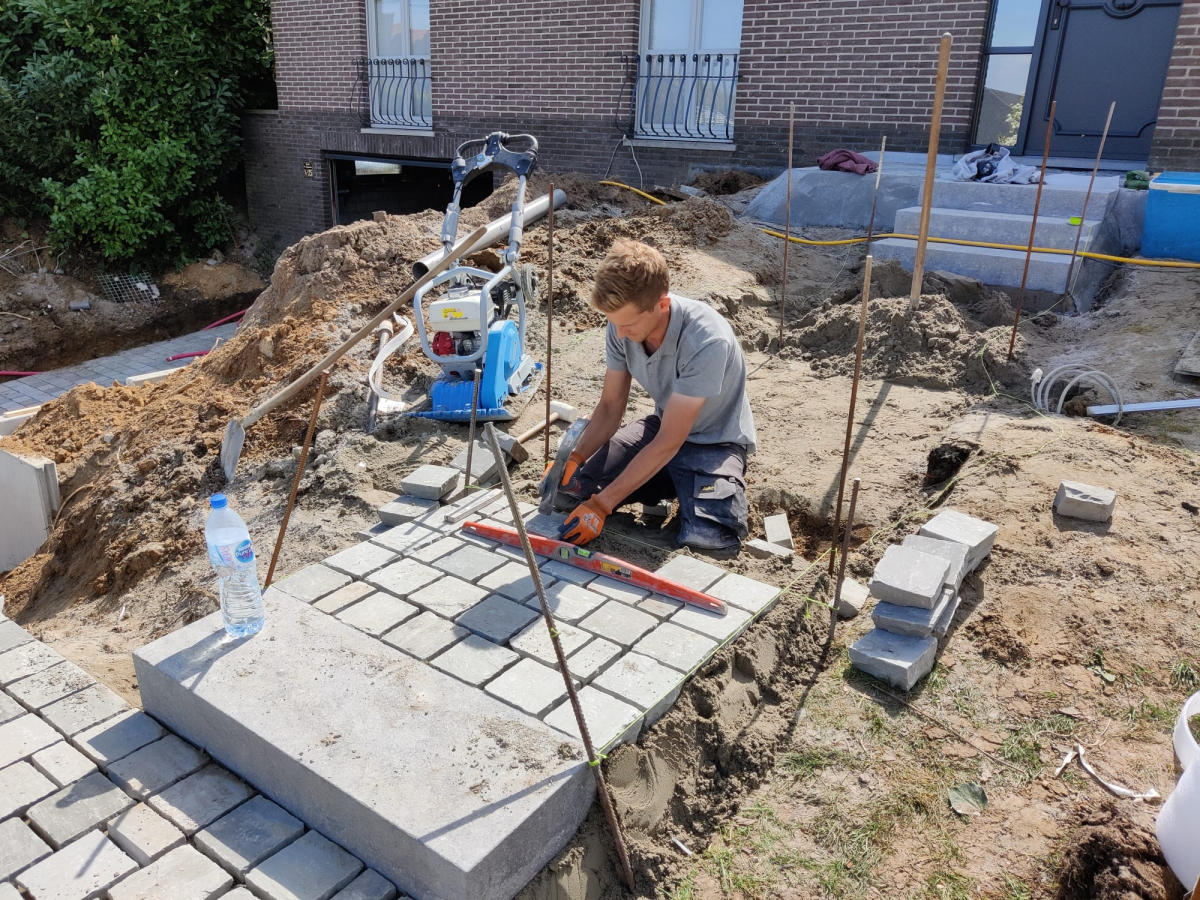
Why did you become self-employed?
Over a period of two years working under a supervisor, I gradually climbed the ranks, eventually reaching the position of a foreman. My key responsibilities included overseeing landscaping for a variety of projects, both private and public. Personally, I found public projects to be less satisfying, mainly because they didn’t allow for direct interaction with the final customers, an aspect that is quite crucial to me. Moreover, private clients generally have higher expectations, demanding nothing short of perfection in the completed work, which is completely justified.
Where and what did you study?
First horticulture in Oudenaarde. And later Garden and Landscape Architecture at the Bijloke in Ghent, at KASK.
From where did the interest and passion for the job originate?
Gosh... from childhood in fact. Helping my uncle with garden renovations. I knew quite early on that I didn't want to do purely desk work, that I wanted a job with a lot of variety.
I read on your website that you do both landscaping and garden design.
True. Garden design, construction and maintenance. The whole package (laughs). A garden design followed by its execution gives me great satisfaction.
Do you manage to do that all by yourself?
Usually, I work alone unless the task is substantial, like laying a lot of paving, where collaboration with colleagues becomes necessary.
Working solo proves to be efficient for me, as it ensures tasks are done precisely the way I prefer (laughs). It also provides flexibility, allowing me to seamlessly adjust my schedule based on weather variations or to prioritize more urgent tasks.
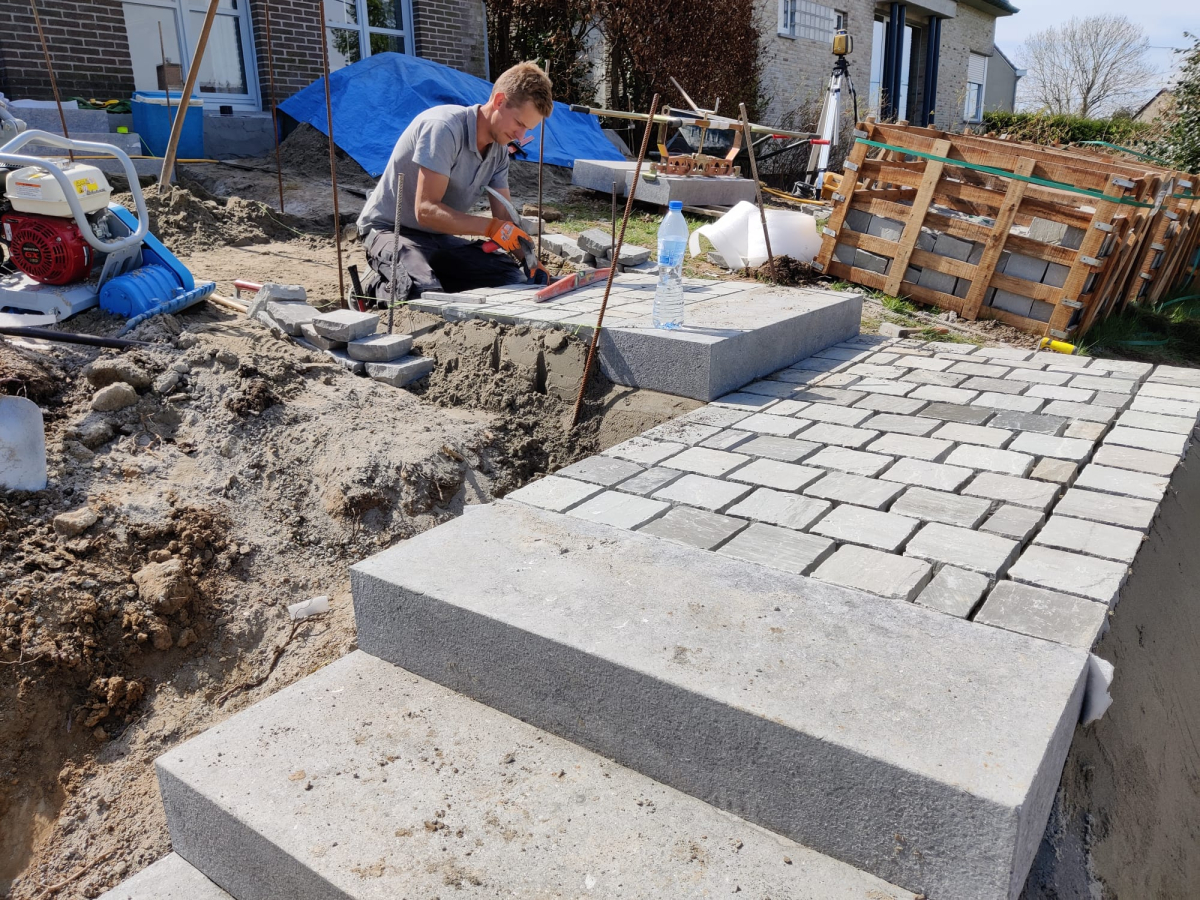
What region are you active in?
The entire region in and around Oudenaarde. Kluisbergen, Anzegem, Ronse, Deinze, Gavere, Kruishoutem. And currently there is also something in the pipeline in Antwerp. But mostly in our own region, around Oudenaarde.
How do people get to Tuinarchitectuur Vandevelde?
I occasionally advertise via Facebook, or sometimes through advertisements. But I find that the best advertising is still word-of-mouth. I also work with a number of "pure" landscapers, for whom I then construct the garden as subcontractor.
When you're responsible for the design, what do the discussions between you and the client typically involve? Who makes the final decisions regarding the placement of each plant?
The design process is often a collaborative interaction. Clients sometimes come with specific ideas, but I always contribute my opinions and advice. For example, I share insights based on my experience, like the suitability of certain plants, trees, or shrubs to specific soils or locations. I discuss factors such as the need for soil improvement, the distance of a tree from a house, the tree's size, species, etc., as these are crucial for the plant's survival chances. I also offer my perspective on aesthetics (laughs). However, the final decision is always up to the customer.
In some cases, I am given complete creative freedom for the design. In such scenarios, discussions usually revolve around what works and what doesn't, and I then tailor the design according to their preferences.
Do you frequently revisit gardens that you have completed?
Yes, as many clients for whom I have created gardens also request that I manage the ongoing maintenance. This leads me to regularly revisit the gardens to observe their growth and progression.
"Returning to those gardens is truly enjoyable: it allows me to witness their evolution and growth over time."
You mentioned using soil conditioner earlier; who typically initiates that? Is it something the client requests, or do you suggest the necessity for soil improvement?
I’m usually the one to address it, based on the on-site conditions and considering the impact of climate change. The recurrent dry years have posed significant challenges that need tackling. Utilizing TerraCottem is a great solution. It necessitates watering, but to a lesser degree, and ensures that water is conserved by retaining it within the granules.
Which TerraCottem soil conditioner do you use?
Mostly TerraCottem universal for the shrubs and perennials and TerraCottem turf for the lawns. But I also plan to use TerraCottem arbor soon for tree plantings.
So how do you explain the added value to the client, and the ensuing additional investment?
As previously mentioned, while there is a somewhat higher initial cost, the long-term benefits are substantial. During dry periods, plants continue to thrive and grow robustly. Improving soil quality is a crucial factor in successful planting.
"Soil conditioning is a fundamental first step in any case, irrespective of the type of soil. I determine the necessary adjustments based on the results of the soil analysis."
Planting with or without soil conditioner, it makes an immense difference.
You said "slightly" more expensive: does the extra price for soil improvement make much difference to the total cost of an entire project?
Not really. Just this week, I worked on a 1000m² lawn. The additional cost for 100 kg of TerraCottem was quite justifiable, particularly considering the long-term benefits. It reduces the amount of time and care required for lawn maintenance significantly, and less watering is also necessary. The grass maintains its green vibrancy for a more extended period, even through prolonged droughts. Without it, frequent watering is required, which might not always be feasible (laughs), or even permissible by government regulations. Skipping the conditioner could lead to more expenses if re-seeding becomes necessary due to the lawn's inability to recover. I experienced this last year with a client who opted not to use a soil conditioner, resulting in a need for lawn restoration.
Are you in charge of ensuring the garden's sustained healthy growth after it has been completed?
No, I usually don’t provide a guarantee. It's possible to offer one if a client requests it, but that would increase the project's cost. From experience, I have a good understanding of how a garden I’ve constructed will flourish. In cases where there's some failure, I bear the replacement costs. For instance, in a project in Oudenaarde, around 10 hedge plants died out of over 350. The rest thrived well, with no loss of trees or perennials. I readily replaced those 10 plants at my own expense. I always collaborate with nurseries that supply quality plants. So, if a significant portion, say 60% of the plants, were to die off, it would indicate a maintenance issue, like insufficient watering.
Do you always do soil analyses?
Not always, but quite often. I have them done at Disaghor. My customary consultant Bart Cornelis is always there to advise and assist me.
Do you also buy TerraCottem from Disaghor?
Yes. Or at Callens Montauban. The collaboration with both partners goes well: smooth service and delivery. And with both, I also have a direct contact person. They sometimes visit me on site to discuss certain matters.
Do you have a particular style when designing gardens?
I employ a consistent structure in each garden to maintain stability throughout the four seasons, commonly using plants like Taxus, Osmanthus, Fagus, and Carpinus.
Trees are a constant in my designs, ensuring that the garden remains vibrant in every season. For perennials and other plants, the selection is often a collaborative decision with the clients, considering not only aesthetic preferences but also maintenance requirements.
A favoured tree in my designs is the Parrotia persica, or Persian ironwood. It is not just its appealing leaf shape that captivates, but also its beautiful spring leaf colours and its subtly exquisite blossoming.
| Read here the blog article "Trees with character: The story behind the monumental Parrotia Persica" |
|---|
 |
Do you have any particular project you would like to highlight?
Yes, I have two that I am especially proud of.
“Project Oudenaarde”
It was total renovation of an outdated garden. The house was barely visible due to an overgrowth of plants. The height difference of 3m from the driveway to the entrance posed a big challenge.
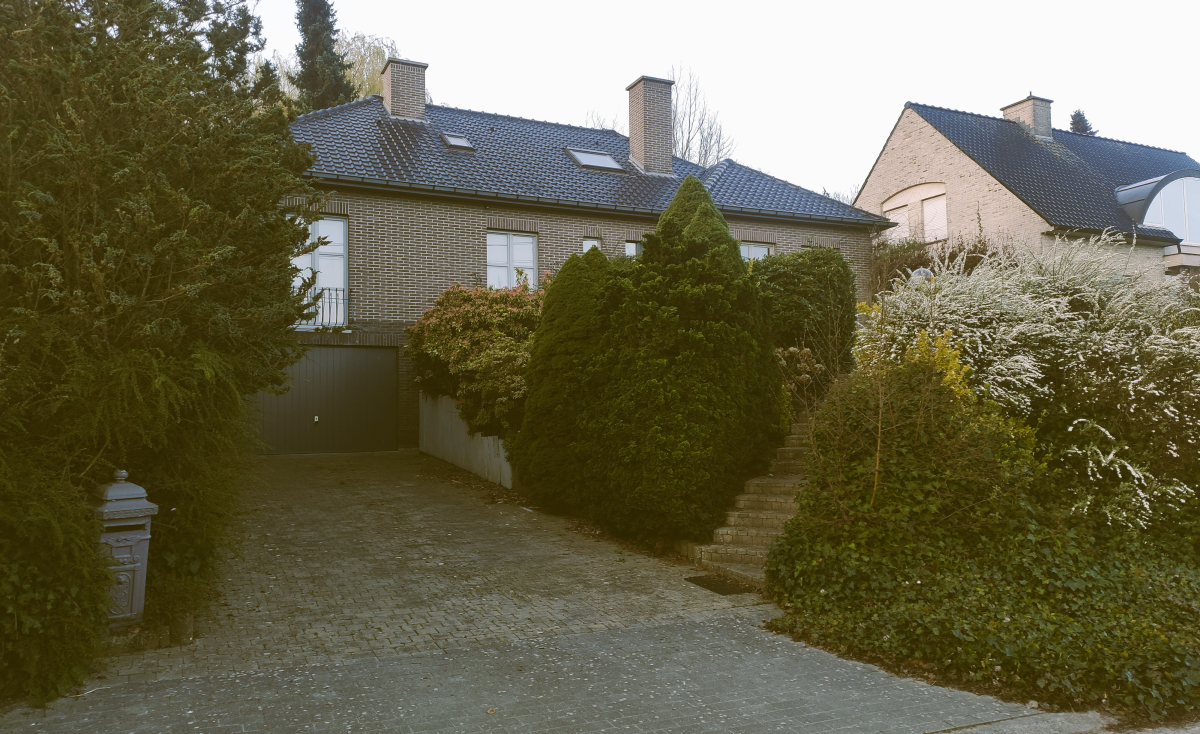
The existing greenery was completely removed. Subsequently I had a soil test done, as there were a lot of acid-loving plants present and no nutrients had been added for years.
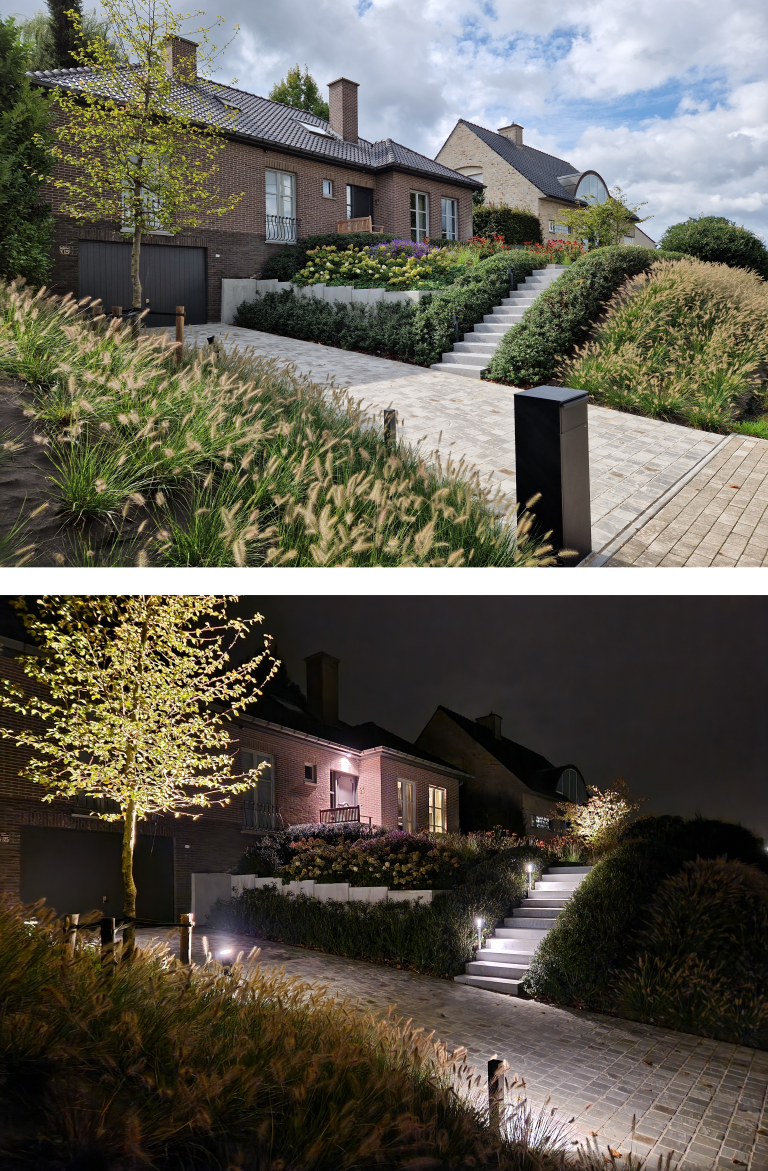
Kandla Grey platins were selected for all the pavements, while the steps were crafted in Belgian bluestone with a weathered finish.
For the plantation, a decision was made to go for a perpetually green massif, complemented by a few trees. A vibrant mixed border consisting of perennials and hydrangeas was also incorporated.
The slope was adorned solely with one species of plant, Pennisetum, to install a sense of tranquillity and ensure substantial fullness during winter. A ground cloth reinforced the slope to prevent erosion.
To finish it off, a modern, contemporary mailbox was installed to complement the house’s aesthetic. The project was meticulously completed with coordinated lighting along the driveway and entry pathway, and ground spotlights were strategically placed around the trees, chosen based on the trees’ anticipated mature size.
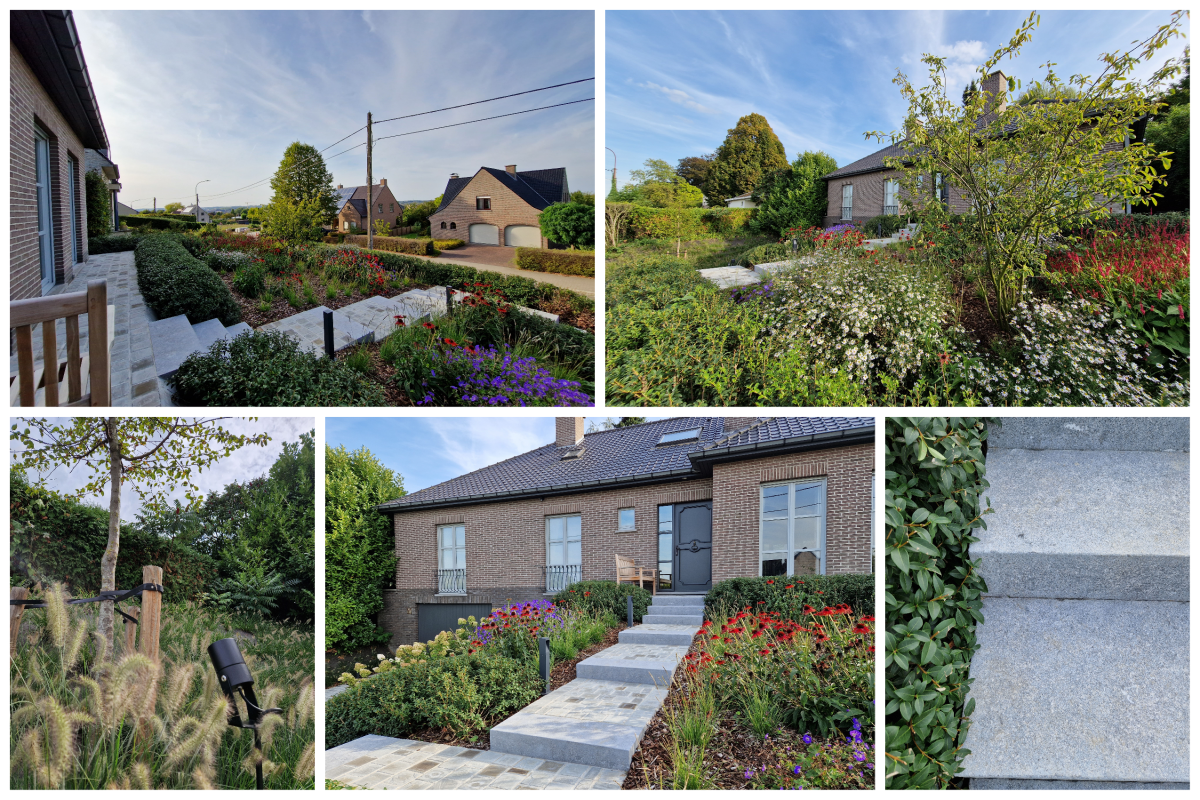
“Project Waregem”
This garden has been transformed into a modern, low-maintenance space. Originally, it was merely a lawn, so a complete makeover was necessary.
The new design features a foundational layer of evergreen hedge massifs and a standalone Parrotia persica, handpicked by me from the nursery.
I also chose to incorporate a diverse range of perennials, complemented by ornamental grasses and flower bulbs, for a mixed border.
A high-quality ground spotlight emphasizes the tree, making it a focal point visible from the house throughout the year, enhancing the garden’s appeal.
The lawn was edged with galvanized metal edging, with a rounded top for safety.
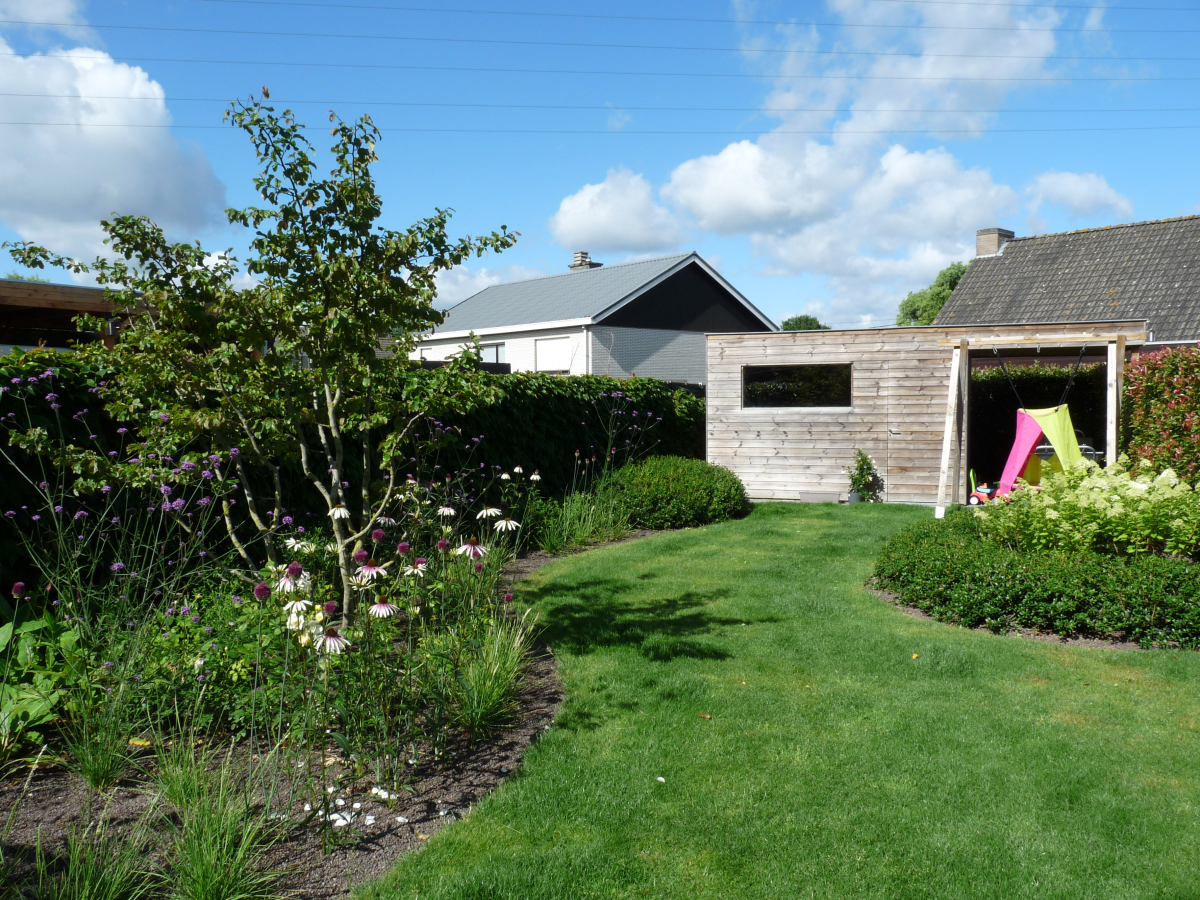
Since this was a newly built house, I knew there was a need for soil improvement, which was to optimize structure, water management and nutrient content.
Two very nice projects, Niels. You can indeed be proud of them!
Thanks also for the pleasant chat.
Want more information about Niels?
Vandevelde tuin- en landschapsarchitectuur
T: 0476 59 73 62 [Niels Vandevelde]
E: info@vandeveldetuinarchitectuur.be
W: www.vandeveldetuinarchitectuur.be
If you know someone who would also like to read this article, feel free to copy the link and share.
Would you like to be in the spotlight too?
You can!
Send a quick email to marketing@terracottem.be and we will schedule an online meeting together.
Would you also like to use TerraCottem in your projects?
Contact usWould you also like to use TerraCottem in your projects?
Contact usTerraCottem Intl. SL
Apartado de Correos 4511190 Benalup (Cádiz)Espagne
